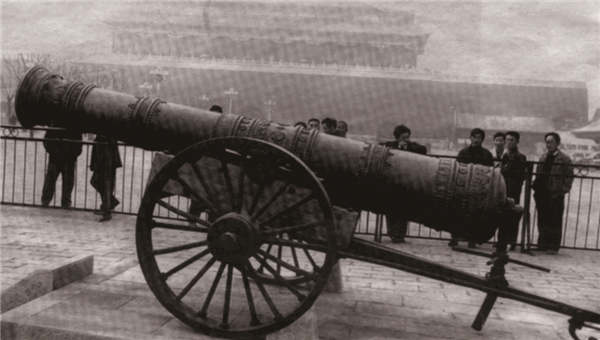On his majesty's service, and at his mercy
 |
|
Cannon constructed under the supervision of von Bell. [Photo provided to China Daily] |
Combining the concept of perspective essential to Western paintings with a color palette and brush stokes that were unmistakably Chinese, Castiglione gave his own interpretation on canvas of Ricci's cultural adaptation and accommodation theories, theories believed to have accounted for the Jesuit missionaries' success in China.
"By providing a detailed pictorial account for Qing Dynasty's longest-reigning emperor, Castiglione himself became part of the history he helped preserve," Li says.
"Qianlong appreciated Castaglione's service so much that he allotted a piece of land to him in the capital's suburb, something that was clearly against his law. But at the same time, the Italian, who also helped lay royal gardens and introduced the technique of enameling to China, never got a free day to preach before his death at the age of 78."
The death was deeply mourned by Emperor Qianlong, whose decree upon hearing the news was inscribed on the painter's tombstone steps away from those of Ricci and von Bell.
In 1644, when the Qing soldiers stormed into Beijing, many missionaries fled, but not von Bell. He chose to stay inside the little church Ricci was allowed to build in Beijing about 1605. Beside him was the Chongzhen Calendar, which he planned to present to his new master in exchange for trust and support for continued missionary work.
"His willingness to take the risk is admirable," Li says. "But keeping in mind the favor and endorsement he had previously received from the Ming emperors and his official friends, it is clear his real faith lay with no one of this world, but with God alone."
Related: Men on a mission









